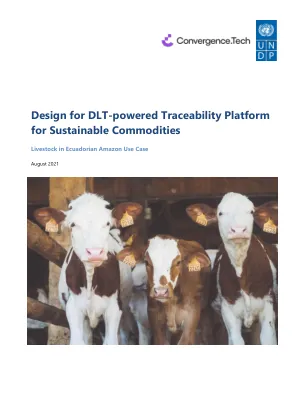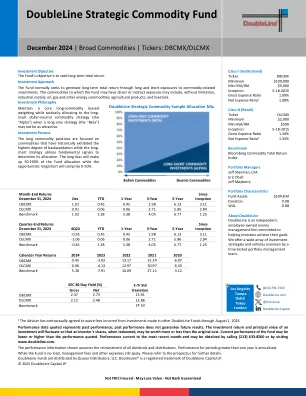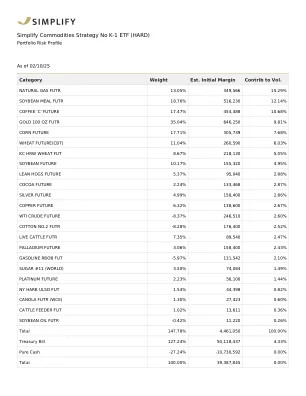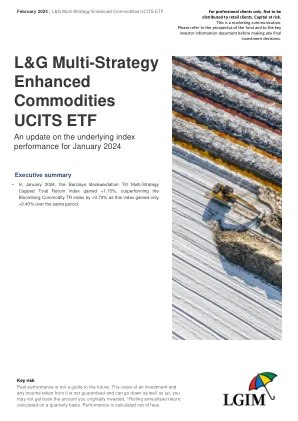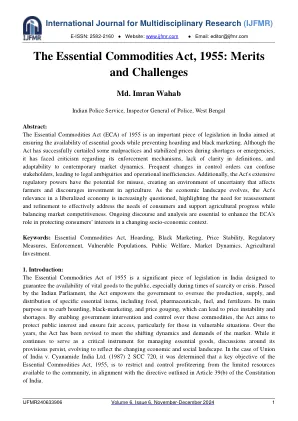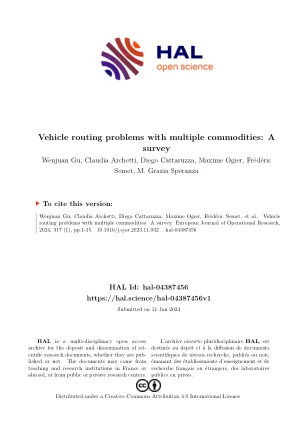XiaoMi-AI文件搜索系统
World File Search SystemCommodities
DoubleLine 战略商品基金概况介绍
Sector allocations and Fund holdings are subject to change at any time and should not be considered a recommendation to buy or sell any security. Portfolio holdings generally are made available 30 days after month-end by visiting www.doubleline.com. The source for the information in this report is DoubleLine Capital, which maintains its data on a trade date basis. Risk Disclosure Investments in debt securities typically decrease in value when interest rates rise. This risk is usually greater for longer-term debt securities. The Fund invests in foreign securities which involve greater volatility and political, economic and currency risks and differences in accounting methods. These risks are greater for investments in emerging markets. The Fund may use leverage which may cause the effect of an increase or decrease in the value of the portfolio securities to be magnified and the Fund to be more volatile than if leverage was not used. Derivatives involve special risks including correlation, counterparty, liquidity, operational, accounting and tax risks. These risks, in certain cases, may be greater than the risks presented by more traditional investments. Investing in ETFs and ETNs involve additional risks such as the market price of the shares may trade at a discount to its net asset value ("NAV"), an active secondary trading market may not develop or be maintained, or trading may be halted by the exchange in which they trade, which may impact a Funds ability to sell its shares. The fund may make short sales of securities, which involves the risk that losses may exceed the original amount invested. Investments in commodities or commodity-related instruments may subject the Fund to greater risks and volatility as commodity prices may be influenced by a variety of factors including unfavorable weather, environmental factors, and changes in government regulations. Any index used by the Fund may not be widely used and information regarding its components and/or its methodology may not generally be known to industry participants, it may be more difficult for the Fund to find willing counterparties to engage in total or excess return swaps or other derivative instruments based on the return of the index. The Fund is non- diversified meaning it may concentrate its assets in fewer individual holdings than a diversified fund. Therefore, the Fund is more exposed to individual stock volatility than a diversified fund.
L&G 多策略增强型商品 UCITS ETF
• 糖价在 12 月下跌约 21% 后反弹约 18%。泰国天气干燥,对甘蔗产量产生负面影响。此外,泰国糖回收率至少 12 年来首次跌破 10%,低于上一季的 11.8%。与此同时,尽管印度政府实施了上限,但一些糖厂仍能够最大限度地利用甘蔗生产乙醇,以牺牲糖产量为代价,这要归功于法院命令,因为这些工厂已成功申请反对上限。此外,由于巴西一些主要产区天气干燥,巴西甘蔗产量下降的预期也支撑了糖价。糖被高估,这有利于 BCC3C3TT 的表现优于 BCOMTR,尽管这受到糖曲线增强机制的负面贡献的限制,因为所选的延期合约表现不及近月合约。
1 B. Yashodeep药房的学生1 B.药房2 Yashodeep药学学院Aurangabad助理教授,印度马哈拉施特拉邦ABS
摘要:1955年的《基本商品法》(ECA)是印度的一项重要立法,旨在确保在防止ho积和黑人营销的同时确保必需品的可用性。尽管该法案在短缺或紧急情况下成功地减少了一些渎职行为和稳定的价格,但它对其执法机制,定义缺乏明确性以及对当代市场动态的适应性面临批评。频繁的控制订单变化会使利益相关者感到困惑,从而导致法律歧义和运营效率低下。此外,该法案的广泛监管权力有可能滥用,创造了一种不确定性的环境,影响农民并阻止对农业的投资。随着经济格局的发展,该法案在自由化经济中的相关性受到质疑,强调了重新评估和改进的需求,以有效地满足消费者的需求并支持农业进步,同时平衡市场竞争力。持续的话语和分析对于增强ECA在不断变化的社会经济背景下保护消费者利益方面的作用至关重要。关键字:基本商品法,ho积,黑人营销,价格稳定,监管措施,执法,脆弱人群,公共福利,市场动态,农业投资。1。简介:1955年的《基本商品法》是印度的一项重要立法,旨在保证向公众提供重要商品,尤其是在稀缺或危机时期。由印度议会通过,该法案使政府有权监督特定基本物品的生产,供应和分配,包括食品,药品,燃料和肥料。其主要目的是遏制ho积,黑色营销和价格欺诈,这可能导致价格不稳定和短缺。通过实现政府干预和对这些商品的控制,该法案旨在保护公共利益并确保公平访问,尤其是对于弱势群体的人。多年来,该法案已进行了修订,以满足市场的转移动力和需求。虽然它继续作为管理基本商品的关键工具,但围绕其规定的讨论持续存在,以反映不断变化的经济和社会格局。在印度联合案诉氰胺印度有限公司(1987)2 SCC 720中,确定1955年《基本商品法》的关键目标是将可用于社区的有限资源限制和控制利润,与印度第39条(b)的指令概述的有限资源相吻合。
中性粒细胞激活和免疫血栓形成谱持续存在于康复covid-19
hal是一个多学科的开放访问档案,用于存款和传播科学研究文件,无论它们是否已发表。这些文件可能来自法国或国外的教学和研究机构,也可能来自公共或私人研究中心。
为什么投资者应该拥有多元化的商品组合
中国的政策简化不仅通过刺激整个经济来支持大量商品和工业金属,而且还经常将刺激引向商品密集型固定资产投资。共同期间的财政支出部分是针对新的基础设施计划的。少于直接的,由于中国利率尚未达到零,因此较低的费率流向了廉价的抵押成本,并且可以通过针对该行业的监管宽松来进一步鼓励住宅建设。都告诉我们,中国的轻松依据可以支持商品密集型产出的有意义的增加。展望未来,中国基础设施融资(包括以5G和物联网等新技术为导向的基础设施)将有所增加,并且中国2020年代刺激资助的项目将继续上线。反对这一点,中国在银行业和房地产部门内的监管收紧可能会对住房建设活动进行权衡。反对这一点,中国在银行业和房地产部门内的监管收紧可能会对住房建设活动进行权衡。
促进可再生氢能及其衍生商品的全球贸易
可再生氢及其衍生商品国际市场的发展需要大幅扩大可持续价值链。需要进一步建设实体基础设施;例如,管道和航运设施是将商品从生产者运送到消费者的必要条件。通过制定和制定围绕技术和重要投入(如生产甲醇和电子煤油所需的水和碳源)发展供应链的计划和战略,将支持强劲的市场发展。此外,制定健全一致的政策框架将促进市场增长、支持可持续生产并促进国际贸易流动。同样明显的是,让社区参与并建立社会认可有助于促进项目成功。
保健品和物流的供应链管理:基础
从事物流工作的每个人都必须记住,他们选择、采购、存储或分发产品是为了满足客户需求。医学实验室商店的仓库管理员存储实验室试剂不只是为了存储;他们存储试剂是为了确保商品安全,以便每个客户在需要时都能获得医疗商品。除了满足最终客户(寻求医疗服务的客户)的需求外,流程中的每个人还满足更直接客户的需求。仓库管理员在向医疗机构发放商品时提供客户服务,中央商店在向地区发放商品时提供客户服务。物流系统通过履行六项权利来确保客户服务。因此,物流周期中的每一项活动都有助于提供卓越的客户服务并确保商品安全。

